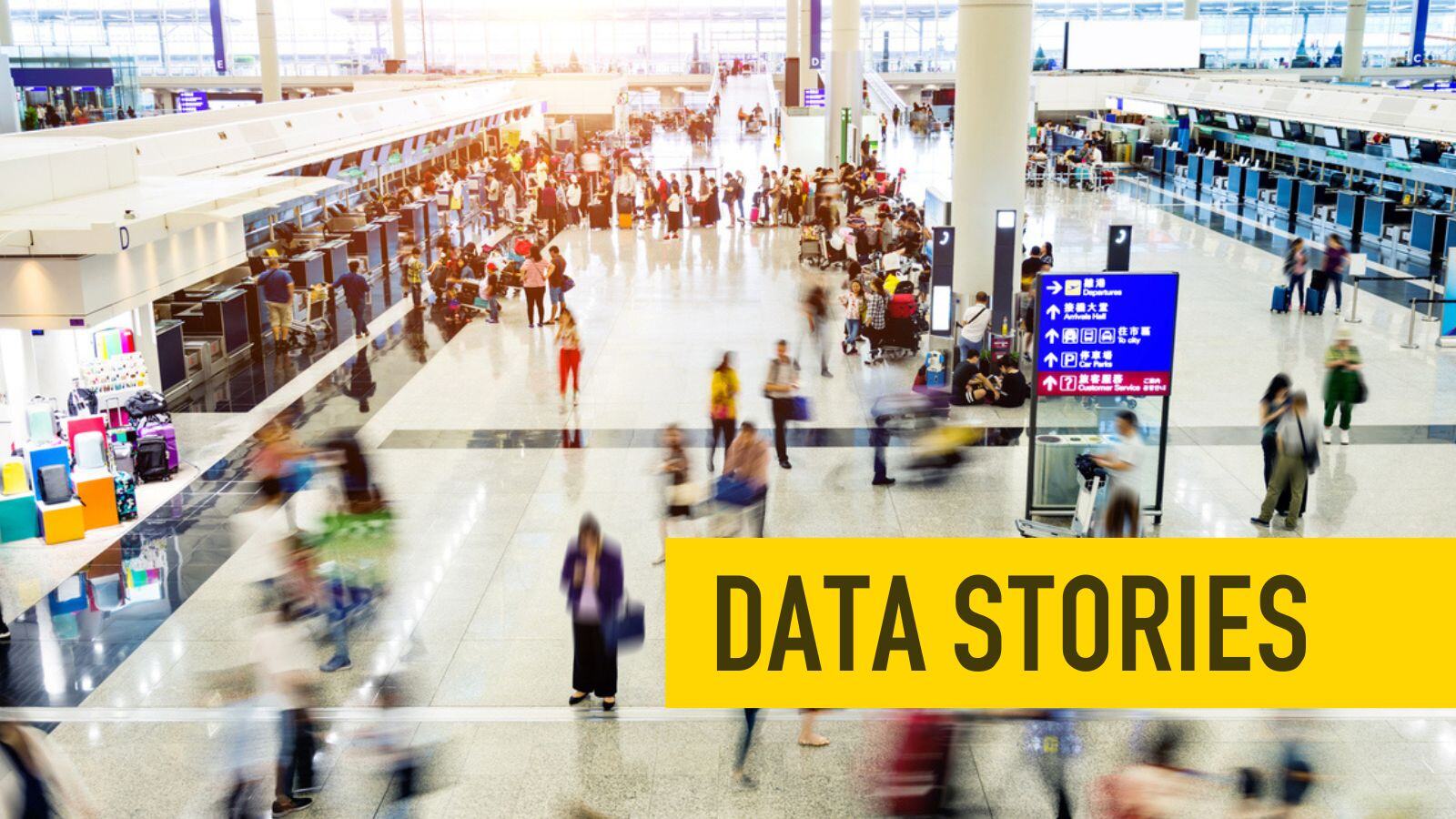The travel advertising industry is projected to reach $15 billion by 2032, with ad investments expected to grow by 7.5% this year alone. To stand out in a competitive landscape marked by evolving consumer behavior, savvy marketers need new ways to optimize their ad spend and maximize their return on investment.
Airports, hospitality establishments, convention centers, and brands can all harness aviation data insights to allocate ad spend strategically, driving results and achieving their marketing objectives.
Enhancing Airside Brand Promotions with Real-Time Insights
Airports churn through visitors at a breakneck pace. Passenger numbers are expected to reach 9.4 billion by 2024 and a global JCDecaux study found that airport advertising ranks highest for perceived value for brands compared to other media. It’s not surprising since airports have multiple touchpoints to reach audiences, like baggage claim displays, airport lounge TV screens, restaurant and store signage, and more with few other distractions.
Furthermore, 70% of air travelers are browsing stands, shops and ads in the airport, while 77% have acted on an airport ad, either during their trip or after it.
More and more, these ads are becoming available through programmatic platforms, or demand-side platforms (DSPs), that automate the process of buying and placing ads. With programmatic platforms, advertisers can customize their ads to fit the current situation, like displaying ads based on real-time flight information, weather conditions or ongoing events. This allows for more targeted and relevant advertising for a broad range of airport audiences.
For example, families vacationing on a budget would be interested in coupons to use at airport shops, leisure travelers would jump on a ziplining adventure promo they see while waiting for an airport shuttle, and luxury hotel ads stationed by an airline gate would appeal to high-end earners like business executives.
It's clear that brands that get it right will capture the attention of these travelers and leave a lasting impression. For example, an international travel retailer can integrate flight data into their ad spend strategy at airports to gain a clearer understanding of peak times and passenger behaviors between various hubs around the world. Using this insight, they can plan promotions and staffing more effectively and capitalize on delays by targeting passengers with relevant offers. Similarly, luxury brands like Chanel and Valentino may target high-end travelers on premium flights, while coffee chains like Starbucks may focus on reaching passengers embarking on long hauls or red eyes.
Tailoring Hospitality Experiences with Precision
Hospitality establishments, particularly hotels and resorts, can use aviation data to tailor guest experiences. By analyzing real-time flight status data, hotels located near airports can track delays and adjust check-in procedures to accommodate guests arriving earlier or later than expected.
They can also analyze flight routes and passenger demographics to identify key feeder markets and tailor promotional offers to attract guests. For instance, if a new direct flight from a particular city to the destination is introduced, the hotel can leverage this insight to tailor promotions aimed at attracting guests from that specific region.
Hotels can also craft targeted advertising campaigns customized to the needs and preferences of guests from different feeder markets based on seat class overlayed with other demographics. For example, upon noticing an uptick in large groups traveling for leisure from a cold to warm destination, the hotel can design packages highlighting outdoor group attractions like jet skiing to entice this demographic.
Similarly, if there's a surge in business travelers from a major metropolitan area following the introduction of a new flight connection, the hotel can offer corporate discounts or tailored amenities to cater to their needs. This strategic alignment of marketing efforts with aviation data enables hotels to maximize the effectiveness of their campaigns and attract guests from key feeder markets, ultimately driving bookings and revenue growth.
CVBs Drive Destination Appeal for Business Tourism
Convention and Visitors Bureaus (CVBs) are highly skilled at crafting marketing strategies to attract visitors to a particular destination. And aviation data is the key to giving CVBs real-time insights into travel trends and patterns, allowing them to tailor their campaigns effectively.
For example, they can analyze historical booking patterns to anticipate the influx of visitors attending major events, strategically placing advertisements in airports and other high-traffic areas to capture their attention upon arrival. CVBs can also use programmatic platforms to adjust their ad placements in real-time based on changing passenger demographics and flight schedules. This ensures maximum exposure to their destination's state-of-the-art facilities, cultural attractions, and dining experiences.
In a fiercely competitive travel industry, the strategic allocation of ad spend is critical for businesses aiming to stand out and drive results. Aviation data is the key ingredient to maximize the effectiveness of marketing efforts. It provides businesses with the real-time insights they need to customize their marketing strategies with precision and help them reach travelers at key moments in their journey.




